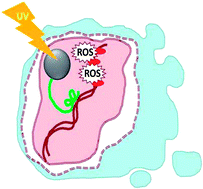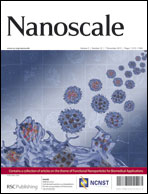Cytotoxicity and DNA cleavage with core–shell nanocomposites functionalized by a KH domain DNA binding peptide†
Abstract
A nanoconjugate was composed of metal

- This article is part of the themed collection: Functional Nanoparticles for Biomedical Applications

 Please wait while we load your content...
Please wait while we load your content...